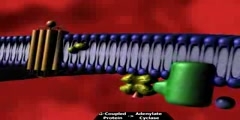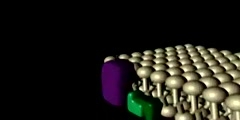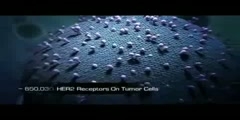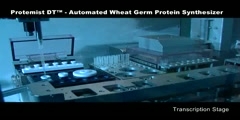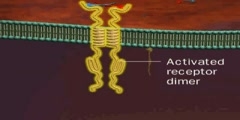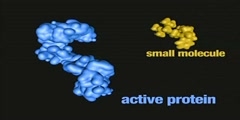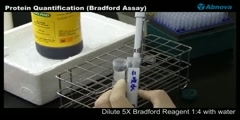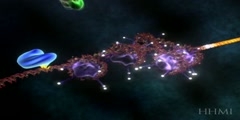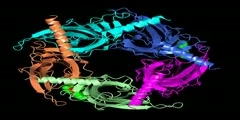G Protein Receptor Take II
This animation describes what takes place with a G protein receptor. G Protein Coupled Receptors (GPCRs) are proteins embedded in the surface of cells. GPCRs comprise the largest superfamily of proteins in the body. More than 1,000 different GPCRs have been identified since the first receptors were cloned. These proteins receive chemical signals from outside the cell and pass the signal into the cell, so that the cell can respond to the signal. The structures of the endogenous ligands for GPCRs are exceptionally diverse. They include biogenic amines such as norephnephrine and serotonine, peptides, glycoproteins, lipids, nucleotides, ions, and proteases. The sensation of exogenous stimuli, such as light, odors, and taste, is also mediated by this class of receptors. Activation of the receptor causes an effector inside the cell to produce a second signal chemical, which eventually triggers the cell to react to the original external chemical signal. A ligand, in this case Norepinepherine (NE), binds to the receptor and induces a conformational change. This conformational change activates the a/b complex. The complex is bound to GDP while it is inactive. GTP replaces GDP, thus activating the Alpha subunit. The activated Alpha subunit undergoes a conformational change and activates Adenylate Cyclase. Once the Adenylate Cyclase is activated, it is then able to convert ATP. The products of ATP conversion are c-AMP and two phosphate molecules. c-AMP is a second messenger used in many processes required for cell survival and growth. Created by: Nelson Caetano Class of 2007 Pharmacy Dr. Jef Bratberg Clinical Assistant Professor of Pharmacy Practice College of Pharmacy
Channels: Scientific Animations Cell Biology
Tags: gprotein
Uploaded by: tubeman ( Send Message ) on 08-09-2007.
Duration: 0m 17s
